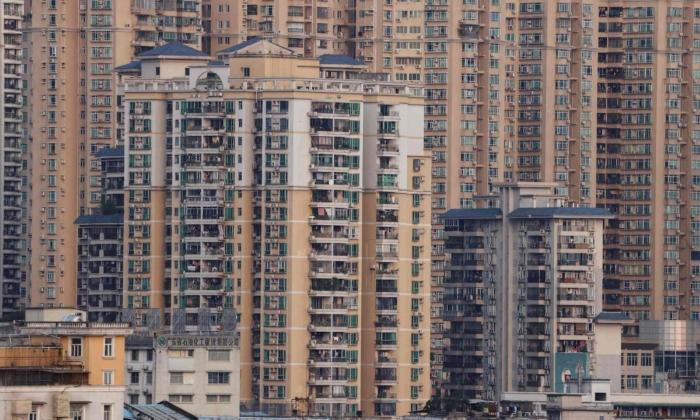When China’s richest man and its most successful real estate developer calls the country’s overheating property market “the biggest bubble in history,” it’s probably not a good sign.
But that’s exactly what Wang Jianlin, billionaire owner of Dalian Wanda Group and Communist Party insider, said in an interview with CNN last week. “The government has come up with all sorts of measures—limiting purchase or credit—but none have worked,” he told CNN.
Average new housing prices across China increased 1.3 percent in August from July, according to state data, which was the 17th consecutive monthly jump. September was also the biggest one month increase since early 2011.
The Shanghai Composite Index has declined 15 percent since Jan. 1. If the trend continues, 2016 would be the biggest drop in five years. But volume on the exchange is also down—to the lowest level in two years—signaling that investors are pouring their money elsewhere after the scare of last year’s market crash.
In 2016, China’s property sector has been the biggest beneficiary.
At a macro level, Chinese retail investors are akin to children at a soccer match; they'll simply swarm to where the action is. And over the last several years, the action mostly seesawed between equities and real estate, with an occasional interest in commodities.
Real estate is the hot market right now, to the point where experts—inside and outside China—are sounding the alarm.
Ma Jun, chief economist at the People’s Bank of China’s research arm, recently called the property market a bubble in an interview earlier this month with Yicai.com.
People’s Daily, the Chinese Communist regime’s mouthpiece, published an editorial last week expressing deep concern about the frothing property market. “Looking at the current average price [of real estate] and personal income in Shenzhen, it would take an average person more than 1,200 months—that is, 100 years—of not eating or drinking to afford a 90 square-meter house,” wrote investor Tang Jun, regarding the unaffordability of Shenzhen real estate.
“China has become an economic power, but the real estate market is a landmine, and the most frightening is that no one knows when it will detonate.”
Dangerous Business Model
Low interest rates mean that even cash-strapped developers can leverage up by way of the relatively cheap onshore bond market. And property developers have been aggressive, putting little thought into their land purchases.
Economists at Deutsche Bank AG pointed out that a “clear sign of a bubble” rests in the fact that land auction prices have become so inflated that the business models of new developments only make economic sense if property prices keep rising at today’s pace.
It’s a line of thinking prevalent amongst investors before the U.S. mortgage crisis a decade ago, where lenders disregarded risks of default or foreclosure by assuming the ever-rising housing prices would cover any losses.

After studying recent land auction prices at ten major cities, Deutsche Bank analysts believe that if real estate prices remain flat from today, half of current developments would lose money. Zhang Ziwei, Deutsche’s chief China economist, thinks a severe correction could arrive in 2018.
Regime Ambivalence
But the Chinese Communist regime has been halfhearted, at best, when trying to tame the market.
Local and regional governments instituted tightening measures at the transactional level such as capping prices, limiting the number of properties per household, and restricting non-local buyers from purchasing by closely examining residence (“hukou”) records.
Localities have taken different approaches. Shanghai, for example, decided to suspend land auctions. Other cities, such as Guangzhou, chose to cap prices. The tactics largely backfired as determined buyers found other channels to secure real estate.
The issue is that authorities have been reluctant to address a main cause of rising housing prices—easy money.
Much of the easy credit has been tied up in the real estate market. State data showed that in August, 71 percent of new bank loans went to household mortgages, instead of to the small to medium-sized businesses whom Beijing hopes would drive the economy.
But it’s too simple to lay the blame on rate and regulatory policy nationally—China is increasingly a country with two divergent economies.
Much of the talk regarding a real estate bubble is in regards to Tier-1/Tier-2 cities and China’s coastal regions where real estate is perceived as safer, relative to other onshore investments.
Elsewhere in China, there is excess inventory and the housing market is mired in a years-long slump. This is especially true in Northern and Northeastern China where the economy—reliant upon coal and steel industries—has been in decline.
After years of overbuilding, provinces of Inner Mongolia, Liaoning, and Jilin all have supply-to-sales ratios of more than four years, according to London-based Lombard Street Research. That means it would take more than four years to sell the number of available homes, at current rate, assuming no new properties would be built. That same metric in the United States is 4.6 months as of August, according to data from the St. Louis Fed.

“Provinces with severe overbuilding (with an excess supply-to-sales ratio of more than three years) accounted for 20% of total residential investment over the past five years,” wrote Michelle Lam of Lombard in a research note.
“Housing construction in those provinces has already shrunk over the last two years and will continue to contract for another couple of years, acting as a significant drag on overall residential investment growth.”






Friends Read Free